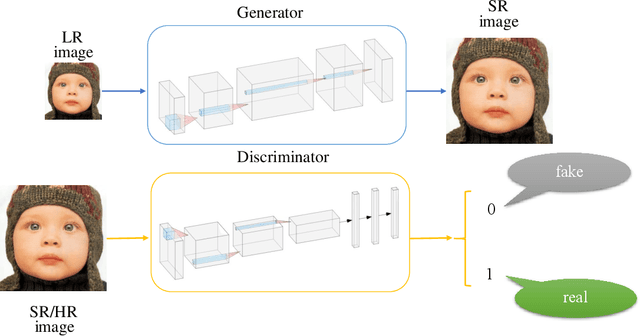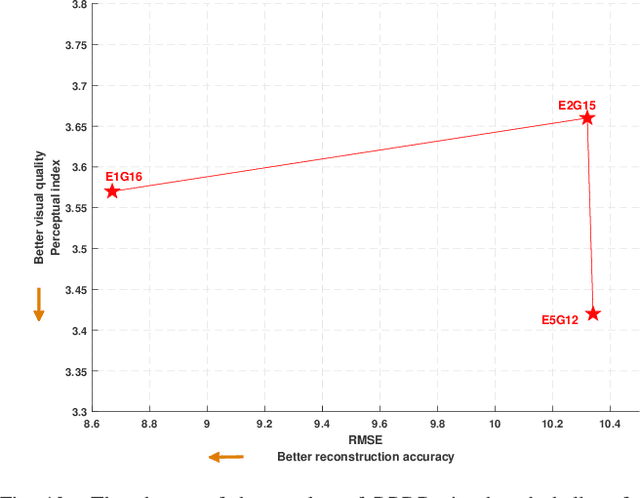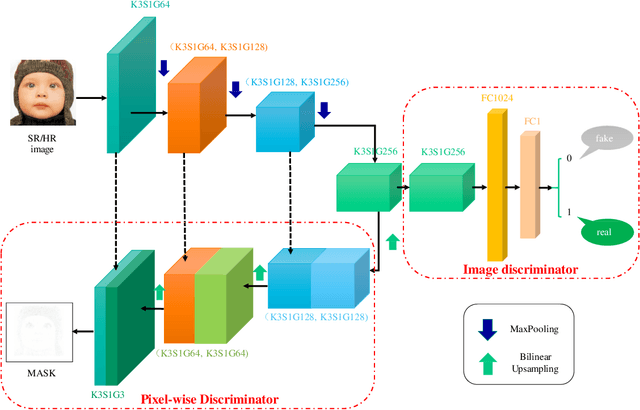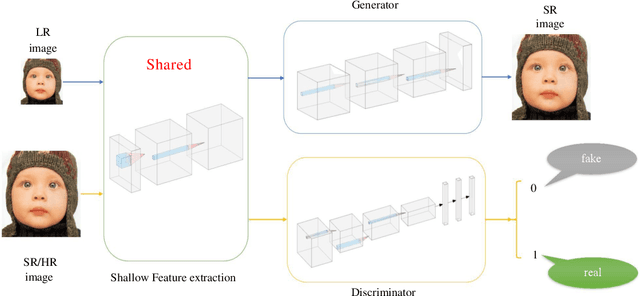Chuangchuang Liu
Fine-grained Attention and Feature-sharing Generative Adversarial Networks for Single Image Super-Resolution
Nov 25, 2019



Abstract:The traditional super-resolution methods that aim to minimize the mean square error usually produce the images with over-smoothed and blurry edges, due to the lose of high-frequency details. In this paper, we propose two novel techniques in the generative adversarial networks to produce photo-realistic images for image super-resolution. Firstly, instead of producing a single score to discriminate images between real and fake, we propose a variant, called Fine-grained Attention Generative Adversarial Network for image super-resolution (FASRGAN), to discriminate each pixel between real and fake. FASRGAN adopts a Unet-like network as the discriminator with two outputs: an image score and an image score map. The score map has the same spatial size as the HR/SR images, serving as the fine-grained attention to represent the degree of reconstruction difficulty for each pixel. Secondly, instead of using different networks for the generator and the discriminator in the SR problem, we use a feature-sharing network (Fs-SRGAN) for both the generator and the discriminator. By network sharing, certain information is shared between the generator and the discriminator, which in turn can improve the ability of producing high-quality images. Quantitative and visual comparisons with the state-of-the-art methods on the benchmark datasets demonstrate the superiority of our methods. The application of super-resolution images to object recognition further proves that the proposed methods endow the power to reconstruction capabilities and the excellent super-resolution effects.
Deformable Non-local Network For Video Super-Resolution
Sep 24, 2019



Abstract:The video super-resolution (VSR) task aims to restore a high-resolution video frame by using its corresponding low-resolution frame and multiple neighboring frames. At present, many deep learning-based VSR methods rely on optical flow to perform frame alignment. The final recovery results will be greatly affected by the accuracy of optical flow. However, optical flow estimation cannot be completely accurate, and there are always some errors. In this paper, we propose a novel deformable non-local network (DNLN) which is non-flow-based. Specifically, we apply the improved deformable convolution in our alignment module to achieve adaptive frame alignment at the feature level. Furthermore, we utilize a non-local module to capture the global correlation between the reference frame and aligned neighboring frame, and simultaneously enhance desired fine details in the aligned frame. To reconstruct the final high-quality HR video frames, we use residual in residual dense blocks to take full advantage of the hierarchical features. Experimental results on several datasets demonstrate that the proposed DNLN can achieve state of the art performance on video super-resolution task.
 Add to Chrome
Add to Chrome Add to Firefox
Add to Firefox Add to Edge
Add to Edge